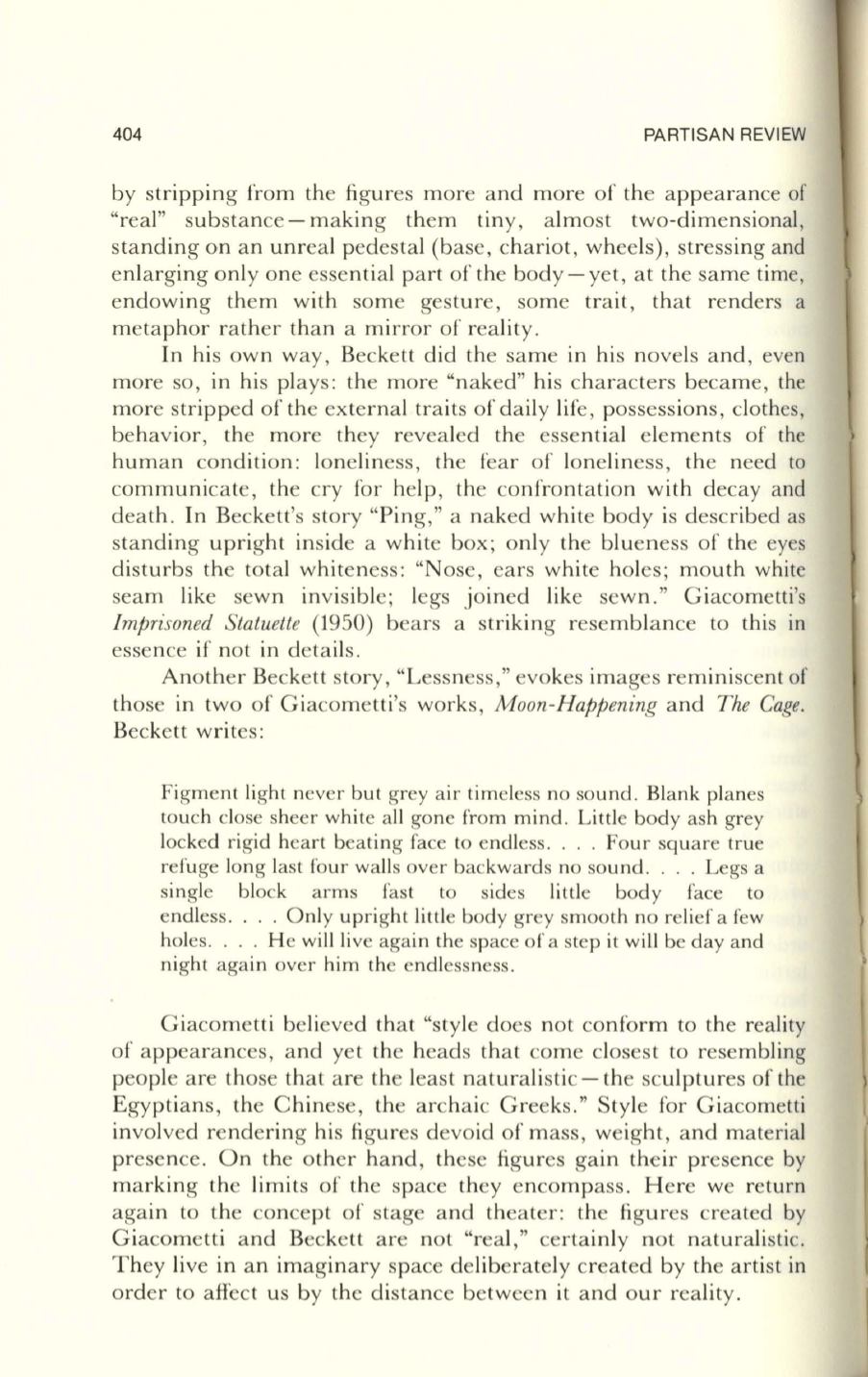
404
PARTISAN REVIEW
by stripping from the figures more and more of the appearance of
"real" substance - making them tiny, almost two-dimensional,
stand ing on an unreal pedestal (base, chariot, wheels), stressing and
en larging only one essen tial part of the body - yet, at the same time,
endowing them with some gesture, some trait, that renders a
metaphor rather than a mirror of reality.
In his own way, Beckett did the same in his novels and, even
more so, in his plays: the more "naked" his characters became, the
more stripped of the external traits of daily life, possessions, clothes,
behavior, the more they revealed the essential elements of the
human condition: loneliness, the fear of loneliness, the need to
communicate, the cry for help, the confrontation with decay and
death. In Beckett's story "Ping," a naked white body is described as
standing upright inside a white box; only the blueness of the eyes
disturbs the total whiteness: "Nose, ears white holes; mouth white
seam like sewn invisible; legs joined like sewn." Giacometti's
Imprisoned Statuette
(1950) bears a striking resemblance to this in
essence if not in details.
Another Beckett story, "Lessness," evokes images reminiscent of
those in two of Giacometti's works,
Moon-Happening
and
The Cage.
Beckett writes:
Figment light never but grey air timeless no sound. Blank planes
touch close sheer white all gone from mind. Little body ash grey
locked rigid heart beating face to endless.... Four square true
refuge long last four walls over backwards no sound.... Legs a
single block arms fast to sides little body face to
endless . . .. Only upright little body grey smooth no relief a few
holes.... He will live again the space of a step it will be day and
night again over him the endlessness.
Giacometti believed that "style does not conform to the reality
of appearances, and yet the heads that come closest to resembling
people are those that are the least naturalistic - the sculptures of the
Egyptians, the Chinese, the archa ic Greeks." Style for Giacometti
involved rendering his figures devoid of mass, weight, and material
presence. On the other hand, these figures gain their presence by
marking the limits of the space they encompass. Here we return
again to the concept of stage and theater: the figures created by
Giacometti and Beckett are not "real," certainly not naturalistic.
They live in an imaginary space deliberately created by the artist in
order to affect us by the distance between it and our reality.


